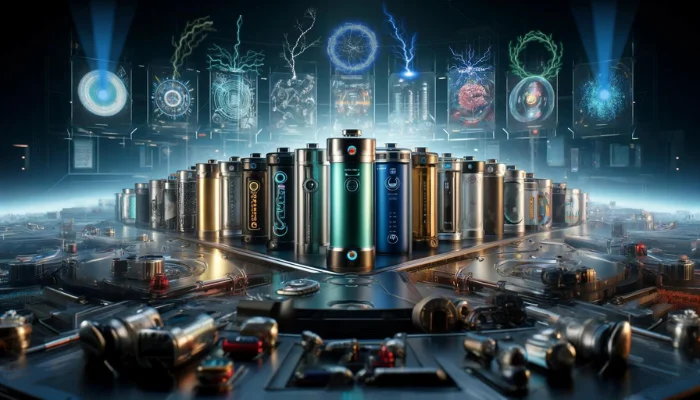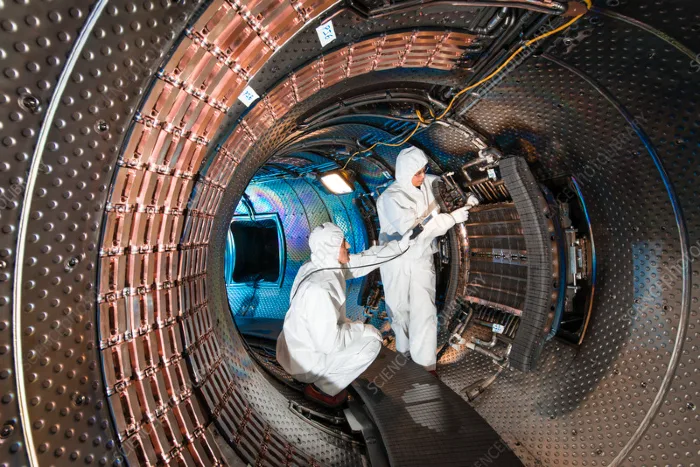In the realm of clean energy, there’s a new game-changer in town, and it’s not just about harnessing the wind and the sun. It’s about the nitty-gritty of tax rules – yes, you heard that right, tax rules! These new guidelines could be the secret sauce to cheaper and faster clean energy projects in the United States.
Here’s what we’re diving into:
- The Biden administration’s latest play: A look at how new tax rules are set to ease the financial strain of connecting clean energy to the grid.
- The interconnection conundrum: Unpacking the costly and lengthy process of hooking up to the power grid and how the new rules aim to tackle it.
- The impact and implications: Exploring the potential ripple effects on the clean energy landscape and the future of renewables in the U.S.
If you’re interested in clean energy, this info is valuable and even important. That said, it can be very boring and tedious to go through, which is why we did it for you. And we plucked out the juicy bits, you should know.
We’re about to make tax rules sound more interesting than ever before – and trust me, that’s a tall order.
The Biden Administration's Latest Play: New Tax Rules for Clean Energy
Once upon a time in the land of the free, connecting clean energy projects to the power grid was like trying to solve a Rubik’s Cube blindfolded – complicated, frustrating, and often ending in a colorful mess. But here comes the Biden administration, capes flapping in the wind, with new tax rules poised to change the game.
The Basics Include New Tax Credits and A Focus On Grid Connection Costs
The Biden administration has proposed tax credits for clean energy projects, a financial pat on the back for those brave enough to venture into the world of renewables.
These aren’t your average tax credits. They’re specifically targeting the often-overlooked costs of connecting to the power grid. Think of it as getting a discount coupon for the most expensive item in your shopping cart.
The Real Challenge: The Grid Connection Maze
Until now, navigating the complexities of connecting to the power grid was like a game of Monopoly – long, unpredictable, and often ending in someone flipping the board. These new rules could be the cheat sheet everyone’s been waiting for.
The process wasn’t just complicated; it was expensive and slow, like ordering a gourmet meal and getting it next Christmas. The new tax rules aim to cut through this red tape, speeding up the process while keeping wallets happier.
What It Means for Project Developers: Reduced Financial Burden
This is like finding an extra twenty in your jeans pocket but for multi-million dollar projects. Lower costs mean more money for other parts of the project, or maybe a fancy office espresso machine. In short, these changes directly equate to greater feasibility of projects being completed.
Projects that were once shelved for being too costly might now see the light of day. It’s like giving a second chance to that high school rock band you were in – they might not all be hits, but there’s potential for a gem.
Navigating the Grid Connection Maze: Easing the Path to Power
Stepping into the world of connecting clean energy to the power grid has often felt like entering a labyrinth – mysterious, confusing, and full of unexpected turns. But fear not, as the new tax rules aim to transform this maze into a straightforward path, well-lit and clearly marked.
Meeting The Challenges of Grid Connection Head-On
Previously, getting a clean energy project connected to the grid was akin to assembling a thousand-piece puzzle, with each piece representing a different regulation, requirement, or fee. The complexity not only strained brains but also budgets.
Project developers were losing patience with grid connection timelines. The wait was long, and anticipation often turned to frustration and in many cases, a failed project because the timeline wasn’t met. Now, with the new tax rules, there’s a direct route with a clear path forward.
3 Ways the New Rules Help
- Simplifying the Process: With the introduction of new tax credits, the maze suddenly has fewer walls. This simplification means fewer headaches for developers and potentially more clean energy feeding into our homes.
- Reducing Costs: Imagine if every twist and turn in the maze dropped a few dollars back into your pocket. That’s what these tax credits do – they lighten the financial load, making projects more viable and attractive.
- Speeding Up Timelines: It’s like going from dial-up internet to high-speed broadband. The new rules aim to accelerate the connection process, getting clean energy projects up and running faster than ever.
With the simplification of the grid connection process, we can expect to see a significant increase in the number of clean energy projects. Previously, the complexity and cost of connecting to the power grid acted as barriers, deterring many potential projects, and only large, well-funded players were able to complete them.
With these barriers lowered, it’s highly likely that small and medium players will finally be able to develop their preferred projects.
We expect to see results from this change quickly, as the smaller and medium-sized projects, which previously found the process too daunting or resource-intensive, are now able to move forward with less red tape getting in the way. This opens opportunities for a wider range of participants in the clean energy sector, allowing for a more diverse and comprehensive development of renewable energy resources which, we believe, is good for everyone.
After all, any economist will tell you that empowering businesses of all sizes to find success isn’t just valuable from an economics standpoint by broadening the scope and reach of clean energy initiatives, it’ll also lead to more localized and community-focused energy solutions.
How The New Tax Rules Could Power Up the Future of Renewables
The easing of grid connection requirements will encourage a number and variety of clean energy projects, that’s evident, but we’re not just assuming solar and wind energy projects! The beauty of these new tax rules is that it reduces the barriers for everyone, meaning we’ll likely see a diversification in the types of renewable energy projects being developed. Potentially lesser-utilized sources like tidal and geothermal energy will come out to play and drive innovation that was simply too expensive beforehand. At least, that’s the great green hope! The broader inclusion of these energy sources will contribute to a more resilient and diverse energy grid, reducing dependence on any single source of energy.
The new tax rules aren’t just financial tools, they’re designed to motivate and serve as a catalyst for innovation within the clean energy sector. Historically, what has always happened with the cost to enter an industry is lowered? We get innovators and entrepreneurs developing new technologies and solutions! We anticipate a surge in research, advancements, and new technologies starting next year for renewable energy generation, eco-friendly energy storage, virtual power plants, and energy distribution.
More Jobs
The increase in clean energy projects is expected to have a positive impact on job creation across various sectors, including engineering, construction, and project management. This job growth isn’t just limited to the direct construction of renewable energy projects but also extends to the ancillary industries that support these developments, such as manufacturing of components, logistics, and maintenance services.
More To Discover
- The Unfreezeable Octopus: A Deep Dive into Antarctica’s Chilliest Mystery (Choose Deep Dive or Kid-Friendly Edition)
- US Considers Poultry Vaccination in Response to Devastating Avian Flu Outbreak
- Wasted Peanut Skins Could Become Nutrient Rich Livestock Feed
- Wind Turbines And The Catastrophic Case of Bat Attractions
Key Takeaways:
- Financial Relief: The new tax credits are a game-changer, reducing the financial burden of connecting to the power grid.
- Simplified Processes: By making grid connection less of a headache, we open the doors to a wider range of clean energy projects.
- A Greener Future: This policy shift holds the promise of significant environmental and economic benefits, driving us towards a cleaner, more sustainable world.
As we’ve journeyed through the labyrinth of new tax rules, we’ve uncovered how these changes are set to revolutionize the clean energy sector in the United States. From the easing of financial and logistical burdens in grid connection to the potential surge in diverse clean energy projects, these rules aren’t just about numbers and percentages; they’re about paving a path towards a sustainable future, encouraging innovation, and creating more jobs.





















